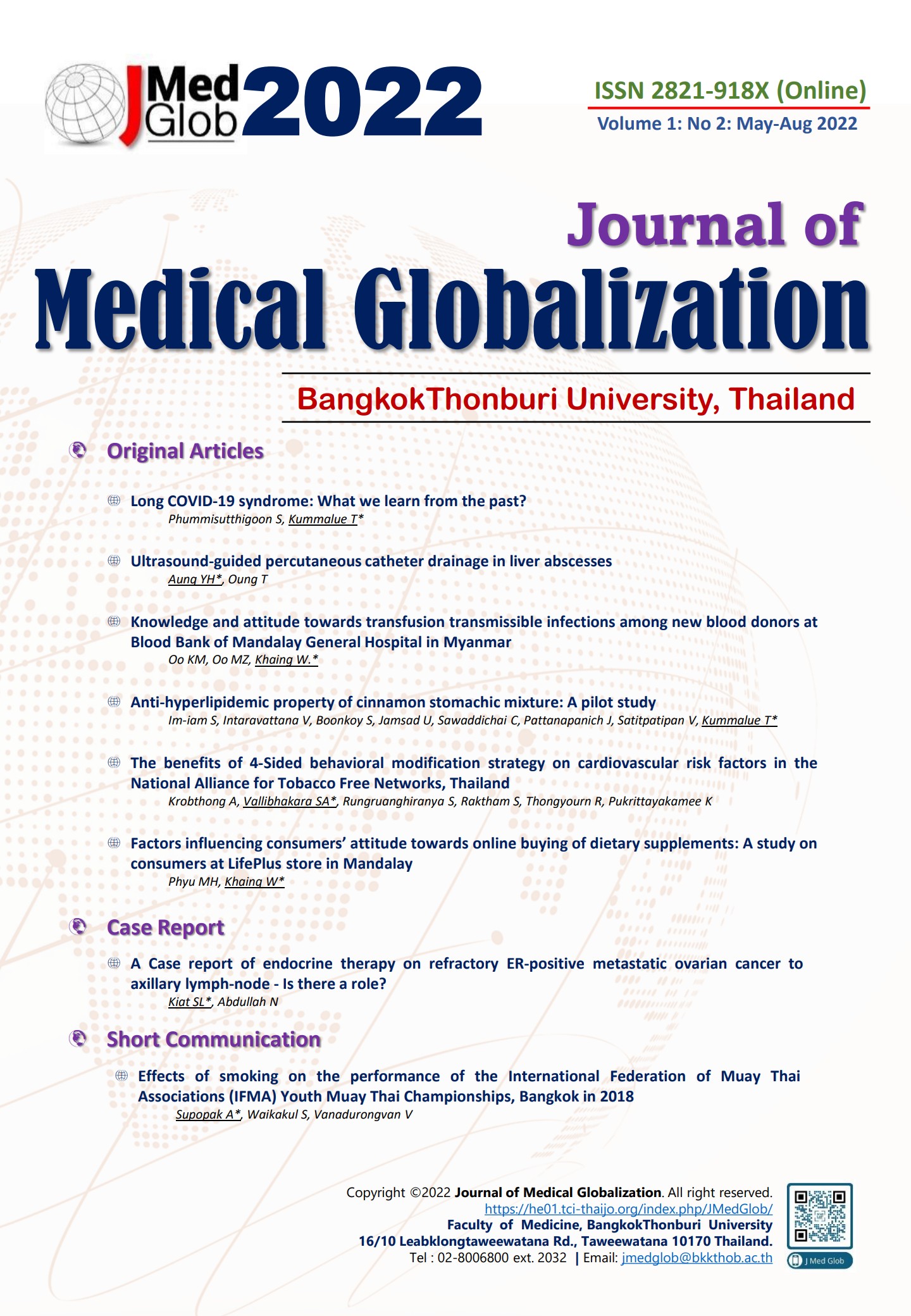A Case of Endocrine Therapy On refractory ER-Positive Metastatic Ovarian Cancer to Axillary lymph-node - Is there a role?
Keywords:
Ovarian Ca, ER, PR, Endocrine therapy, hormonal therapy, aromatase inhibitor, metastatic ovarian ca, metastatic breast ca, breast endocrineAbstract
Ovarian carcinoma is the leading cause of death in gynaecological malignancy. It is important to differentiate between metastatic ovarian cancer to the axillary lymph-nodes with metastatic breast cancer to the axillary lymph-nodes as each treatment differs. We started endocrine therapy on a 58-year-old lady with ER-positive metastatic ovarian cancer to the axillary lymph-node as the wound was refractory to chemoradiation therapies. Endocrine therapy is easy to administer and has a low toxicity profile with reasonably good outcome. It should be considered in patients who are refractory to chemotherapy, non-tolerable and in palliative cases.
References
Young RC, Chabner BA, Hubbard SP, et al.: Advanced ovarian adenocarcinoma: A prospective clinical trial of melphalan (L-PAM) versus combination chemotherapy. N Engl J Med 1978, 299:1261–1266.
Cormio G, Rossi C, Cazzolla A, Resta L, Loverro G, Greco P (2003) Distant metastases in ovarian carcinoma. Int J Gynecol Cancer 13:125–129
Conte PF, Bruzzone M, Carnino F, et al: Carboplatin, doxorubicin, and cyclophosphamide versus cisplatin, doxorubicin, and cyclophosphamide: A randomized trial in stage III-IV epithelial ovarian carcinoma. J Clin Oncol 9:658-663, 1991Kauff ND, Mitra N, Robson ME, et al. Risk of ovarian cancer in BRCA1 and BRCA2 mutationnegative hereditary breast cancer families. J Natl Cancer Inst 2005; 97:1382.
Markman M, Bookman MA. Second-line treatment of ovarian cancer. Oncologist. 2000;5(1):26-35.
Sabbatini P, Sprongs D: Salvage therapy for ovarian cancer. Oncology 1998;12:383–344.
de Andrade JM, Marana HR, Sarmento Filho JM, Murta EF, Velludo MA, Bighetti S. Differential diagnosis of axillary masses. Tumori 1996;82:596-9.
Zang RY, Zhang ZY, Cai SM, Tang MQ, Chen J, Li ZT (2000) Epithelial ovarian cancer presenting initially with extraabdominal or intrahepatic metastases: a preliminary report of 25 cases and literature review. Am J Clin Oncol 23:416–419
Markman M, Bookman MA. Second-line treatment of ovarian cancer. Oncologist.2000;5(1):26-35.
Bhatnagar AS, Hausler A, Schieweck K: Inhibition of aromatase in vitro and in vivo by aromatase inhibitor. J Enzyme Inhib 1990;4:179–186.
Gautam G. Rao, David S. Miller, MD. Clinical Applications of Hormonal Therapy in Ovarian Cancer. 2005, 6:97–102 Current Science Inc. ISSN 1527–2729
del Carmen MG, Fuller AF, Matulonis U, Horick NK, Goodman A, Duska LR, Penson R, Campos S, Roche M, Seiden MV. Phase Ⅱ trial of anastrozole in women with asymptomatic müllerian cancer. Gynecol Oncol 2003; 91: 596-602
Bowman A, Gabra H, Langdon SP, et al. CA125 response is associated with estrogen receptor expression in a phase ii trial of letrozole in ovarian cancer: identification of an endocrine sensitive subgroup. Clin Cancer Res.2002;8:2233–9.
Ramirez PT, Schmeler KM, Milam MR, et al. Efficacy of letrozole in the treatment of recurrent platinumand taxaneresistant highgrade cancer of the ovary or peritoneum. Gynecol Oncol. 2008;110:56–9.
Smyth JF, Gourley C, Walker G, MacKean MJ, Stevenson, A, Williams AR, Nafussi AA, Rye T, Rye R, Stewart M, Mc-Curdy J, Mano M, Reed N, McMahon T, Vasey P, Gabra H,Langdon SP. Antiestrogen therapy is active in selected ovarian cancer cases: the use of letrozole in estrogen receptorpositive patients. Clin Cancer Res 2007; 13: 3617-3622
Published
How to Cite
Issue
Section
License
Copyright (c) 2022 Journal of Medical Globalization

This work is licensed under a Creative Commons Attribution-NonCommercial 4.0 International License.








